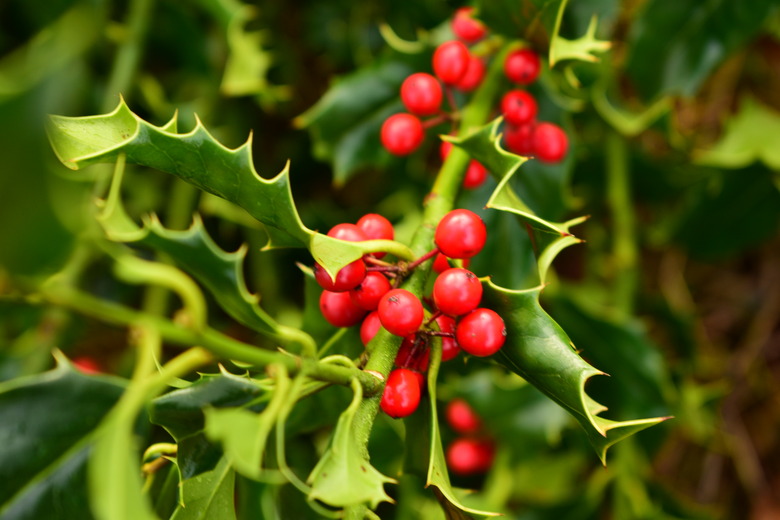Why Does The Fruit Keep Falling Off My Holly Bushes?
Berries fall off holly bushes; that's a fact. But if your berries appear to be dropping from your holly (Ilex spp.) before maturity or seem to be shedding at a faster rate than usual, it may be due to environmental conditions, or they could be the victims of overly enthusiastic birds.
Immature Loss of Holly Berries
The primary reason that a holly bush would begin to drop immature fruit, i.e. those that are still green, is drought or freezing conditions, but other factors may come into play as well.
(**Note:** The fruit from holly plants are actually drupes, not berries.)
Drought or Freezing Conditions
Both very dry and very cold conditions can result in immature fruit drop.
If your growing season is unusually dry, your holly may shed flowers or fruit to conserve moisture. Holly trees like the soil moist but well-draining. When first planting, water deeply; then continue to monitor moisture levels and water only if the soil has dried out. Hollies cannot tolerate waterlogged soil.
A mature holly is actually quite drought tolerant, but if you do have a very hot, dry summer, be sure to give it a deep soak every couple weeks. You'll know your tree is parched if young leaves begin to wilt or mature leaves start to drop.
If your location has experienced a late spring freeze, immature berries may drop as well.
Poor Pollination
It's also possible that the fruit were poorly pollinated to the degree that the fruits just couldn't make it to maturity. Hollies are dioecious, which means that male flowers appear on one plant and female flowers on another. This means that you need both a male and female holly to produce drupes, which you probably have because it would bear no drupes otherwise.
But fruit that are not fully pollinated won't contain seeds, and these drupes will drop prematurely. Poor pollination is not necessarily related to the lack of a pollinating tree; rather, it can be due to cold or rainy weather immediately after flowering, which would decrease the ability of pollinating insects to do their work. The natural pollination that occurs via the wind can also be impacted by bad weather.
Tip
Animals such as birds and squirrels eating your fruits and inadvertently shaking your plants are a common cause of premature fruit drop for holly bushes.
The Drop of Mature Holly Fruit
If your holly fruit have made it to maturity and are red or black, depending on the variety, they will normally stay on the bush through the winter. They are, however, delectable treats for birds, but they may also be stressed by pests or disease, which could cause them to drop drupes.
Birds Are Eating My Fruit!
Birds usually feed on holly fruit when they become soft after repeated freezing and thawing. Birds can easily knock off an entire cluster while managing to secure a single drupe, so if you're noticing a lot of bird activity around your hollies, that's probably the reason.
Squirrels may also snack on your drupes, and a large squirrel leaping up and down your holly bush would certainly dislodge drupes.
Pests and Disease Problems
Insects and disease may weaken a holly to the point that its drupes are not fully formed, so they may drop off.
- **Fungal diseases:** Various fungal diseases can target holly bushes, including black root rot, phytophthora root rot and tar spot. Certain diseases result in the discoloration of fruit; for instance, tar spot is evidenced by yellow spots on the leaves, but the fruit too may be spotted, then fall off. Prevent fungal diseases by purchasing healthy hollies from a reputable nursery; then ensure good drainage and proper fertilization and watering. Check with your local nursery or university extension office for holly care, depending on your variety.
- **Insects and pests:** Pests that can attack hollies include nematodes, mites, leafminers and scale. No effective chemical has been found to control
nematodes, so if your soil is infected with nematodes, you'll need to dig out the plant and remove the surrounding soil. Mites, leafminers and scale target the leaves and stems. Watch for leaf discoloration or mottling along with leaf drop. If you observe these symptoms, contact an expert to determine the exact cause and treatment.
